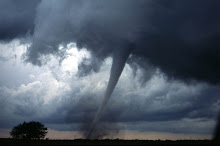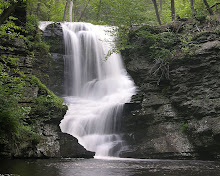Not many people get to know the real me, but the few that do, know that I love the absolute cold weather!! Expect maybe in cases 50 below Zero!! This summer has been extremely rough on me cause you can always put on extra clothes, but you can only take off so many...LOL
Antarctica, is my absolute favourite continent to study... I would love to go their and do research and explore the mountains, the ice caps, the animals, etc...
Antarctica is also one of the driest places on earth...many people think that it snows there constantly and they get plenty of precipitation, but in fact Antarctica could be and I believe it is classified as a desert!!... Once again thanx to www.wikipedia.org here is some information about my favourite Continent!!
Antarctica is Earth's southernmost continent, overlying the South Pole. Situated in the southern hemisphere and largely south of the Antarctic Circle, Antarctica is surrounded by the Southern Ocean. At 14.4 million km², it is the fifth-largest continent in area after Asia, Africa, North America, and South America; in turn, Europe and Australia are smaller. Some 98% of Antarctica is covered by ice, which averages at least 1.6 kilometers (1.0 mi) in thickness.
On average, Antarctica is the coldest, driest and windiest continent, and has the highest average elevation of all the continents.[1] Since there is little precipitation, except at the coasts, the interior of the continent is technically the largest desert in the world. There are no permanent human residents and there is no evidence of any existing or pre-historic indigenous population. Only cold-adapted plants and animals survive there, including penguins, fur seals, mosses, lichen, and many types of algae.
The name Antarctica comes from the Greek antarktikos (ανταρκτικός), meaning "opposite to the Arctic."[2] Although myths and speculation about a Terra Australis ("Southern Land") date back to antiquity, the first confirmed sighting of the continent is commonly accepted to have occurred in 1820 by the Russian expedition of Mikhail Lazarev and Fabian Gottlieb von Bellingshausen. However, the continent remained largely neglected for the rest of the 19th century because of its hostile environment, lack of resources, and isolation.
The Antarctic Treaty was signed in 1959 by twelve countries; to date, forty-five countries have signed the treaty. The treaty prohibits military activities and mineral mining, supports scientific research, and protects the continent's ecozone. Ongoing experiments are conducted by more than 4,000 scientists of many nationalities and with different research interests.
Antarctica is the coldest place on Earth. It is a frozen desert with little precipitation; the South Pole itself receives less than 10 cm (4 inches) per year, on average. Temperatures reach a minimum of between -80 °C and -90 °C (-112 °F and -130 °F) in the interior in winter and reach a maximum of between +5 °C and +15 °C (41 °F and 59 °F) near the coast in summer. Sunburn is often a health issue as the snow surface reflects almost all of the ultraviolet light falling on it.[23] Eastern Antarctica is colder than its western counterpart because of its higher elevation. Weather fronts rarely penetrate far into the continent, leaving the center cold and dry. Despite the lack of precipitation over the central portion of the continent, ice there lasts for extended time periods. Heavy snowfalls are not uncommon on the coastal portion of the continent, where snowfalls of up to 1.22 meters (48 inches) in 48 hours have been recorded.
Mountain glaciation.
Mountain glaciation.
At the edge of the continent, strong katabatic winds off the polar plateau often blow at storm force. In the interior, however, wind speeds are typically moderate. During summer, more solar radiation reaches the surface during clear days at the South Pole than at the equator because of the 24 hours of sunlight each day at the Pole.[3]
Antarctica is colder than the Arctic for two reasons. First, much of the continent is more than 3 km above sea level, and temperature decreases with elevation. Second, the Arctic Ocean covers the north polar zone: the ocean's relative warmth is transferred through the icepack and prevents temperatures in the Arctic regions from reaching the extremes typical of the land surface of Antarctica.
Given the latitude, long periods of constant darkness or constant sunlight create climates unfamiliar to human beings in much of the rest of the world. The aurora australis, commonly known as the southern lights, is a glow observed in the night sky near the South Pole. Another unique spectacle is diamond dust, a ground-level cloud composed of tiny ice crystals. It generally forms under otherwise clear or nearly clear skies, so people sometimes also refer to it as clear-sky precipitation. A sun dog, a frequent atmospheric optical phenomenon, is a bright "spot" beside the true sun.
Over the next few months I will bring some more information about Antarctica!! Thanx again to www.wikipedia.org
Friday, August 10, 2007
Subscribe to:
Post Comments (Atom)





No comments:
Post a Comment